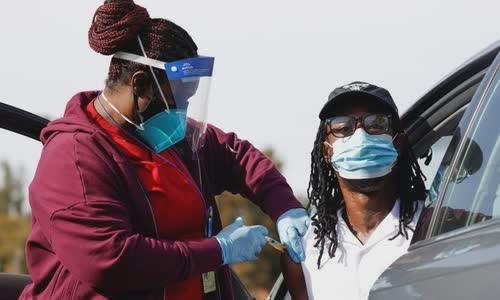The wave of COV infections in the US appears to have cooled down as new infections in the past 7 days tended to decline across the country.
According to data from the New York Times on February 5, the average daily cases in the US peaked on January 8 with nearly 260,000 new infections.

A nurse injected Covid-19 vaccine for people in the city of Pasadena, California, USA, on January 12 Photo: Reuters
Several regions in the US, including the Midwestern region, are seeing a sharp drop in new CoV infections compared to other locations.
The major places where cases have experienced a sharp decline are mainly small-scale seeds, which have a relatively low total number of cases.
New cases of nCoV were found to be most pronounced in the Midwest.
However, even as nCoV cases are currently on a downward trend across the United States, some regions are still seeing a rapid increase in cases compared to the epidemic peak experienced last year.
In the state of Maine, for example, it recorded relatively low new infections last November, but the numbers increased steadily until they reached their highest level in late January.
In New York state, areas outside of New York City have not been affected by the pandemic as badly as last spring, but have faced a severe Covid-19 wave this winter.
Experts say that in assessing the Covid-19 situation in the United States, it remains to be seen whether the nCoV strain variables, which are emerging in some areas, are causing an increase in cases.
In addition, vaccination is also an important factor, as more people are vaccinated means the infection rate can decrease.
According to data from the real-time update site World Ometers, the US is the largest epidemic region in the world with more than 27.2 million cases and more than 467,000 deaths caused by nCoV.



 Victoria Antionette Chakales
Victoria Antionette Chakales







